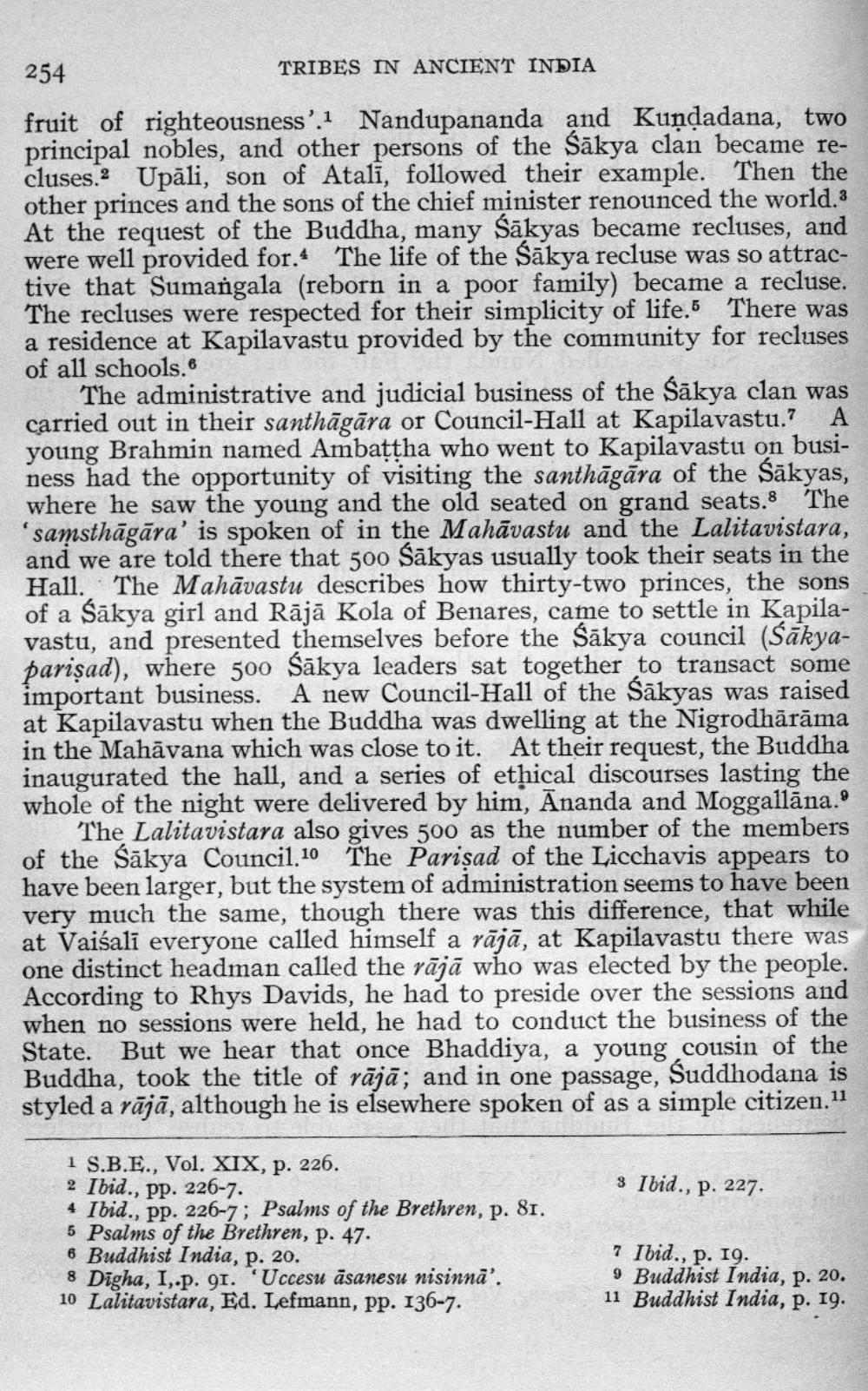________________
254
TRIBES IN ANCIENT INDIA
fruit of righteousness'.1 Nandupananda and Kundadana, two principal nobles, and other persons of the Sakya clan became recluses.2 Upāli, son of Atali, followed their example. Then the other princes and the sons of the chief minister renounced the world." At the request of the Buddha, many Sakyas became recluses, and were well provided for. The life of the Sakya recluse was so attractive that Sumangala (reborn in a poor family) became a recluse. The recluses were respected for their simplicity of life. There was a residence at Kapilavastu provided by the community for recluses of all schools.
A
The administrative and judicial business of the Sakya clan was carried out in their santhagara or Council-Hall at Kapilavastu.7 young Brahmin named Ambaṭṭha who went to Kapilavastu on business had the opportunity of visiting the santhagara of the Sakyas, where he saw the young and the old seated on grand seats. The 'samsthāgara' is spoken of in the Mahavastu and the Lalitavistara, and we are told there that 500 Sakyas usually took their seats in the Hall. The Mahavastu describes how thirty-two princes, the sons of a Sakya girl and Rājā Kola of Benares, came to settle in Kapilavastu, and presented themselves before the Sakya council (Sakyaparisad), where 500 Sakya leaders sat together to transact some important business. A new Council-Hall of the Sakyas was raised at Kapilavastu when the Buddha was dwelling at the Nigrodhārāma in the Mahāvana which was close to it. At their request, the Buddha inaugurated the hall, and a series of ethical discourses lasting the whole of the night were delivered by him, Ananda and Moggallāna." The Lalitavistara also gives 500 as the number of the members of the Sakya Council. 10 The Pariṣad of the Licchavis appears to have been larger, but the system of administration seems to have been very much the same, though there was this difference, that while at Vaiśali everyone called himself a rājā, at Kapilavastu there was one distinct headman called the raja who was elected by the people. According to Rhys Davids, he had to preside over the sessions and when no sessions were held, he had to conduct the business of the State. But we hear that once Bhaddiya, a young cousin of the Buddha, took the title of raja; and in one passage, Suddhodana is styled a rājā, although he is elsewhere spoken of as a simple citizen."1
1 S.B.E., Vol. XIX, p. 226.
2 Ibid., pp. 226-7.
4 Ibid., pp. 226-7; Psalms of the Brethren, p. 81.
5 Psalms of the Brethren, p. 47.
6 Buddhist India, p. 20.
8 Digha, I,.p. 91. Uccesu asanesu nisinna'.
10 Lalitavistara, Ed. Lefmann, pp. 136-7.
8 Ibid., p. 227.
7 Ibid., p. 19.
9 Buddhist India, p. 20.
11 Buddhist India, p. 19.




